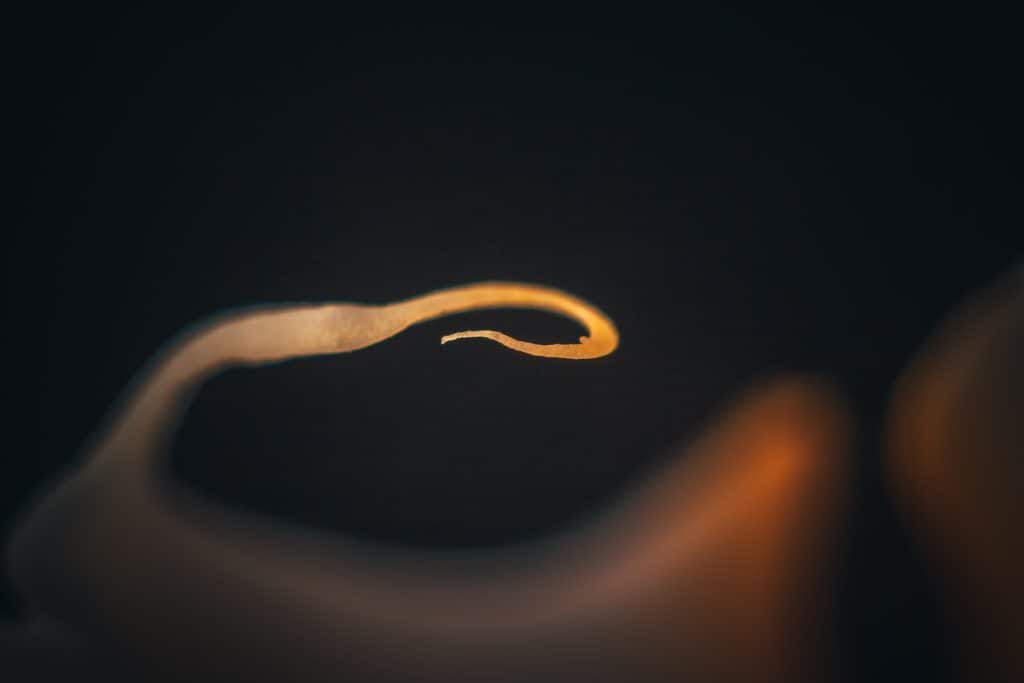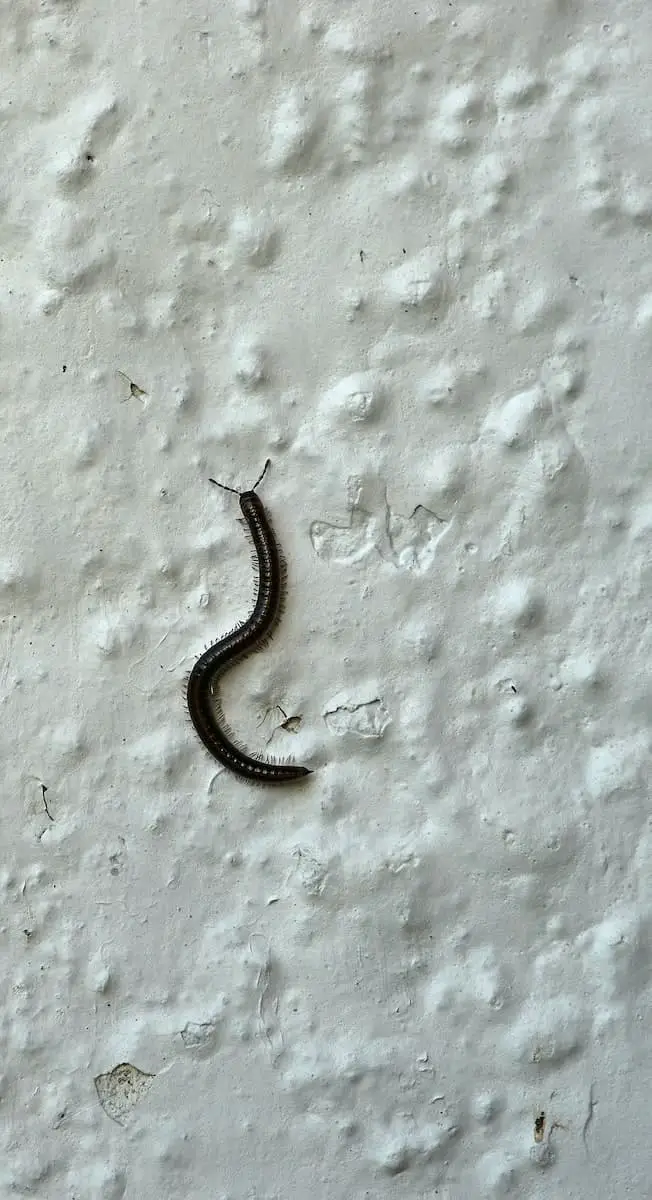Do you have whipworms problem and wondering how to get whipworms out of yard.
Whipworms are a tenacious parasite that can cause your dog significant suffering and illness. Explore the steps below to learn how to eliminate whipworms from your yard if it has been infested with them. So, how to get whipworms out of your yard?
- It is necessary to give your dog an effective whipworm therapy.
- Remove all dog, fox, or coyote droppings from your yard.
- Condition your soil with lime.
- Disinfect your yard’s paving surfaces.
- Remove 6 inches of topsoil and reseed your yard.
- Pave the flooring to prevent whipworm infestation.
If you’re looking for ways to keep your pet safe and get rid of whipworms in your yard, look no further. These methods will help you banish these parasites for good.
What Are Whipworms?
Whipworms are a parasitic worm that commonly infects dogs, foxes, and coyotes by living in their intestinal tract. Whipworm infection generally happens when your dog ingests whipworm eggs from the feces of an infected canine. This typically occurs when a dog licks its paws after walking on contaminated ground where whipworms are present.
Whipworm eggs hatch inside your dog’s digestive tract after ingestion, where the mature worms burrow into the intestinal lining, causing discomfort, bloody diarrhea, and—in severe situations—anemia and death. During this stage, whipworms also produce eggs that are excreted with your dog’s feces and infect the ground again with more whipworms.
While whipworm infections are possible in both humans and cats, they’re uncommon in the U.S. However, you should still be mainly concerned with your dog’s health.

How to Get Whipworms Out of Yard: 6 Methods for Whipworm Yard Treatment
Knowing how to get whipworms out of yard is really important. Once a yard is infested with whipworms, it’s nearly impossible to get rid of them. Unhatched whipworm eggs may survive in the ground for up to five years, surviving heat, cold, and most lawn treatments. Use the following strategies to eliminate whipworm and make your yard safe once again.
Treat Your Dog For Whipworm
If your dog tests positive for whipworms, you’ll need to consult your veterinarian for the best course of treatment. Unfortunately, infected dogs can’t be cured with a single pill–the process may take several steps. However, it is essential to get rid of the worm infestation as soon as possible to protect your dog’s health.
After your dog has been cleared of whipworms, start preventive medication immediately. Keep in mind that most dewormers and worm-preventers won’t work against whipworms. Instead, choose a wormer that targets them specifically. Administer the dosage as indicated on the packaging. Because they’re so difficult to get rid of from an area entirely, this is the best way to make sure your dog doesn’t become infected again after treatment clears them.
Maintain a Clean Yard
Whipworm eggs enter the soil from an infected dog’s feces. They must mature for 2-4 weeks after being passed through the intestinal tract before they can cause infection when ingested. By cleaning your dog’s feces early and often, you prevent whipworm eggs from reaching the soil and maturing into dangerous parasites.
Although this method cannot eliminate whipworm eggs that are already in your yard, it will discourage new eggs from infected animals from entering the soil. Reducing whipworm egg populations is crucial, so you must be vigilant about cleaning up after your dog immediately.
Apply Lime
If you’re looking for a way to get whipworms out of your yard, all you have to do is say the word “lime.” Lime is a natural substance that can be used to dehydrate whipworm eggs and eliminate them from your soil. It’s also fine for grass and animals.
Use a spreader to distribute lime over the soil. Lime should be applied at a rate of 40-50 pounds per 1,000 square feet of yard. This will be sufficient to destroy whipworm eggs in the dirt.
If you’re looking to use lime to kill whipworm eggs, know that the lime must be kept dry for two whole weeks in order for it to work. After applying the lime, make sure not to water your lawn at all for those 14 days. If rain should occur or if the ground becomes muddy, the effectiveness of the lime will be compromised. Keep this method only as a last resort during periods of extreme drought.
Disinfect Paved Surfaces
Although whipworm eggs are commonly found in topsoil, they can migrate to your patio or deck. To kill these infectious eggs on hard surfaces, such as patios or decks, use a bleach spray. Applying this topical treatment will eradicate the whipworm eggs present.
Remove Topsoil
The topsoil is where whipworm eggs are found, and they’re easy to eat for animals. As a result, getting rid of whipworms in your yard may be as simple as digging up the top 6 inches of soil.
If you have a small yard, then this method may work for you. Its success depends on getting rid of the old soil, replacing it with new soil, and starting fresh with new grass seed.
Pave Areas to Prevent Whipworms
If you’re struggling to get rid of whipworms, don’t despair. Once the eggs have invaded your soil, they are incredibly difficult to kill. However, paving high-traffic areas in your yard will make it much easier to disinfect with bleach and significantly reduce your dog’s contact with whipworm-infected ground–which is the best way to get rid of them for good.
How to Get Whipworms Out of Yard: How Long Can Whipworms Live in Soil?
Whipworms can survive in the soil for up to five years. If you don’t address a whipworm infestation right away, it might damage your dog’s health for the next five years. The best way to defend against whipworms is to get rid of them by using lime or dirt removal, if possible.
How to Get Whipworms Out of Yard: Can Whipworms Survive Freezing Temperatures?
Whips can survive for months in the winter. Whipworm eggs may endure severe winters and scorching summers. If your dog has recently been infested with whipworm or you believe your yard is tainted, consult an expert on how to get whipworms out of yard.
How to Get Whipworms Out of Yard: How to Treat Your Yard for Whipworms
Whipworms are a common infection in dogs, so you need to know how to get whipworms out of yard. Though not the only option in some cases, dewormers kill any whipworms present and prevent anymore from entering. By being consistent with this routine, you increase the chance of keeping your dog disease-free.
Agricultural lime is an effective way to kill whipworm eggs that are present in soil. To work, the lime must be kept dry for two weeks. Other options for killing whipworms in soil include removing six inches of topsoil or paving over infected soil.
How to Get Whipworms Out of Yard- Bottom Line
How to get whipworms out of yard? Whipworms are a common infection in dogs, but there is a way to protect your furry friend–dewormers. Though not the only option in some cases, dewormers kill any whipworms present and prevent anymore from entering. By being consistent with this routine, you increase the chance of keeping your dog disease-free. Agricultural lime is an effective way to kill whipworm eggs that are present in soil.
To work, the lime must be kept dry for two weeks. Other options for killing whipworms in soil include removing six inches of topsoil or paving over infected soil.
Paving your yard may be the best way to prevent whipworms from returning. This will create a barrier between your dog and the whipworm eggs. If you have a small yard, then you may be able to get rid of whipworms by removing the topsoil and starting fresh with new grass seed. However, this method is only effective if all of the old soil is removed.


